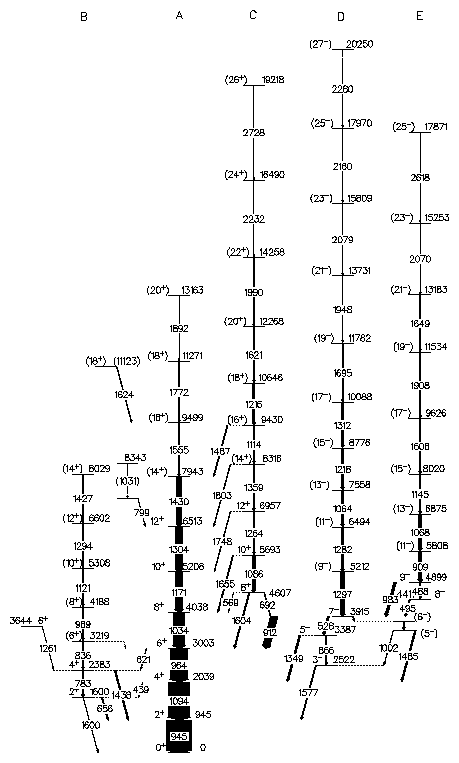| >Shape Coexistence at High Spin in the N = Z + 2 Nucleus Se A,B,E | |||
|---|---|---|---|
| G. Rainovski1, H. Schnare, R. Schwengner, C. Plettner, L. Käubler, F. Dönau, I. Ragnarsson2, J. Eberth3, T. Steinhardt3, O. Thelen3, M. Hausmann4, A. Jungclaus4, K.P. Lieb4, A. Müller4, G. de Angelis4, A. Gadea5, D.R. Napoli5, A. Algora5, D. Jenkins6, R. Wadsworth6, A. Wilson6, W. Andrejtscheff7, V.I. Dimitrov1, | |||
|
The structure of nuclei in the vicinity of N = Z in the mass region A » 70 - 80 reveals a rich variety of structural phenomena and provides a good test for nuclear models. The competition between proton and neutron shell gaps occurring at large oblate and prolate deformations near the nucleon numbers 36 and 38 results in a coexistence of different nuclear shapes [1]. The purpose of the present study is to extend the knowledge about the structure of nuclei close to N = Z in the mass region A » 70 - 80. In particular, the information about high-spin states in such nuclei is scarce, since they can be produced in heavy-ion fusion reactions with small cross sections only. With the advent of large highly-efficient spectrometers as EUROBALL there are new prospects for the study of nuclei close to N = Z which are populated in weak reaction channels. 
Fig. 1 Level scheme of 70Se deduced from the present experiment.
Excited states in 70Se were populated via the 2a2p exit channel
of the reaction 40Ca + 40Ca at a beam energy of 185 MeV. The 40Ca beam was provided by the XTU tandem
accelerator at the Laboratori Nazionali di Legnaro. Gamma rays were measured
with the EUROBALL III array consisting of 15 Cluster and 26 Clover detectors.
Charged particles were detected with the silicon ball ISIS consisting of 40
DE-E telescopes. In the forward hemisphere, 50 neutron detector units
filled with liquid scintillator BC501A were mounted.
1 FZR and Faculty of Physics, University of Sofia, 1164 Sofia, Bulgaria References
[1] W. Nazarewicz et. al, Nucl. Phys. A 435, 397 (1985)
|